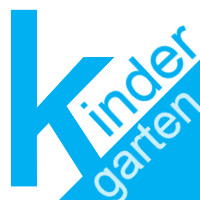K Grade English
 Standards Glossaries
Standards Glossaries
| K Grade English | 1st Grade English | 2nd Grade English |
 Standards Glossaries
Standards Glossaries
| 3rd Grade English | 4th Grade English | 5th Grade English |
 Standards Glossaries
Standards Glossaries
| 6th Grade English | 7th Grade English | 8th Grade English |
 Standards Glossaries
Standards Glossaries
| 9th Grade English | 10th Grade English | 11th Grade English | 12th Grade English |
 Standards Glossaries
Standards Glossaries
| HS Journalism | HS Speech |
| (RF) Reading Foundations |
ELA-00.RFNarrative for Reading Foundations Strand:The Foundational Skill standards are directed toward fostering students' understanding and working knowledge of: Concepts of Print: Recognizing the features print (ex. how to hold a book, knowing where to start reading....) Phonological Awareness: Understanding how spoken words work (rhyming, hearing the individual sounds in words such as the first sound in the word cat is /c/). Phonics and Word Study: The relationship between letters and sounds in language. Students will learn to recognize high-frequency words (ex. I, and, go, is, the) automatically. Fluency: The ability to read smoothly and expressively, and in kindergarten students will participate in shared reading experiences and hear teachers reading aloud. This helps kindergarteners understand that we read with purpose and understanding. How to help your child at home with the foundational skill strand:
Resources
Calculation Method for StrandsStrands are larger groups of related standards. The Strand Grade is a calculation of all the related standards. Click on the standard name below each strand to access the learning targets and proficiency scales for each strand's related standards. | |
ELA-00.RF.01ELA-00.RF.01 Demonstrate understanding of the organization and basic features of print.Sub-Standards:
a. Follow words from left to right, top to bottom, and page by page.
b. Recognize spoken words are represented in written language by specific sequences of letters.
c. Understand words are separated by spaces in print.
d. Recognize and name all uppercase and lowercase letters of the alphabet. Student Learning Targets:Knowledge Targets
Reasoning Targets
Skills (Performance) Targets
Proficiency ScaleThe student can ...1 Beginning... with help, demonstrates a partial understanding of some of the simpler details and processes (Score 2.0 content) and some of the more complex ideas and processes (Score 3.0 content).Novice 2 Developing... demonstrates no major errors or omissions regarding the simpler details and processes but exhibits major errors or omissions regarding the more complex ideas and processes (Score 3.0 content).
3 Proficient“The Standard.”... demonstrates no major errors or omissions regarding any of the information and processes that were end of instruction expectations.
4 Advanced... demonstrates in-depth inferences and applications regarding more complex material that go beyond end of instruction expectations.Complex Resources | |
ELA-00.RF.01.p1 | |
ELA-00.RF.02
ELA-00.RF.02 Demonstrate understanding of spoken words, syllables, and sounds (phonemes)Sub-Standards:
a. Recognize and produce rhyming words.
b. Count, pronounce, blend, and segment syllables in spoken words. c. Blend and segment onsets and rimes of single-syllable spoken words.
d. Isolate and pronounce the initial, medial vowel, and final sounds (phonemes) in three phoneme (consonant-vowel-consonant, or CVC) words. (This does not include CVCs ending with /l/, /r/, or /x/).
e. Add or substitute individual sounds (phonemes) in simple, single-syllable words to make new words. Student Learning Targets:Knowledge Targets
Reasoning Targets
Skills (Performance) Targets
Proficiency ScaleThe student can ...1 Beginning... with help, demonstrates a partial understanding of some of the simpler details and processes (Score 2.0 content) and some of the more complex ideas and processes (Score 3.0 content).Novice 2 Developing... demonstrates no major errors or omissions regarding the simpler details and processes but exhibits major errors or omissions regarding the more complex ideas and processes (Score 3.0 content).
3 Proficient“The Standard.”... demonstrates no major errors or omissions regarding any of the information and processes that were end of instruction expectations.
4 Advanced... demonstrates in-depth inferences and applications regarding more complex material that go beyond end of instruction expectations.Complex ResourcesVocabulary
Websites
| |||
ELA-00.RF.02.p1 | |
ELA-00.RF.02.p2 | |
ELA-00.RF.02.p3
ELA-00.RF.02 Demonstrate understanding of spoken words, syllables, and sounds (phonemes)
ELA-00.RF.02.p3 Part 3
| |
ELA-00.RF.03
ELA-00.RF.03 Know and apply grade-level phonics and word analysis skills in decoding words.Sub-Standards:
a. Demonstrate basic knowledge of one-to-one letter-sound correspondences by producing the primary or many of the most frequent sounds for each consonant.
b. Associate the long and short sounds with common spellings (graphemes) for the five vowel sounds.
c. Decode and use CVC words.
d. Read common high-frequency words by sight. e. Distinguish between similarly spelled words by identifying the sounds of the letters that differ. Student Learning Targets:Knowledge Targets
Reasoning Targets
Skills (Performance) Targets
Proficiency ScaleThe student can ...1 Beginning... with help, demonstrates a partial understanding of some of the simpler details and processes (Score 2.0 content) and some of the more complex ideas and processes (Score 3.0 content).
2 Developing... demonstrates no major errors or omissions regarding the simpler details and processes but exhibits major errors or omissions regarding the more complex ideas and processes (Score 3.0 content).
3 Proficient“The Standard.”... demonstrates no major errors or omissions regarding any of the information and processes that were end of instruction expectations.
4 Advanced... demonstrates in-depth inferences and applications regarding more complex material that go beyond end of instruction expectations.
ResourcesVocabulary
Websites
| |||
ELA-00.RF.03.p1
ELA-00.RF.03 Know and apply grade-level phonics and word analysis skills in decoding words.
ELA-00.RF.03.p1 Part 1
| |
ELA-00.RF.03.p2
ELA-00.RF.03 Know and apply grade-level phonics and word analysis skills in decoding words.
ELA-00.RF.03.p2 Part 2
| |
ELA-00.RF.03.p3 | |
ELA-00.RF.04ELA-00.RF.04 Read with sufficient accuracy and fluency to support comprehensionSub-Standards:
a. Read grade level text with purpose and understanding.
b. Read grade level text orally with accuracy, appropriate rate, and expression on successive readings.
c. Use context to confirm or self-correct word recognition and understanding, rereading as necessary.
Student Learning Targets:Knowledge Targets
Reasoning Targets
Skills (Performance) Targets
Proficiency ScaleThe student can ...1 Beginning... with help, demonstrates a partial understanding of some of the simpler details and processes (Score 2.0 content) and some of the more complex ideas and processes (Score 3.0 content).Start 2 Developing... demonstrates no major errors or omissions regarding the simpler details and processes but exhibits major errors or omissions regarding the more complex ideas and processes (Score 3.0 content).Simple 3 Proficient“The Standard.”... demonstrates no major errors or omissions regarding any of the information and processes that were end of instruction expectations. Target 4 Advanced... demonstrates in-depth inferences and applications regarding more complex material that go beyond end of instruction expectations.Complex ResourcesVocabulary
Websites
| |||



 Kindergarten
Kindergarten